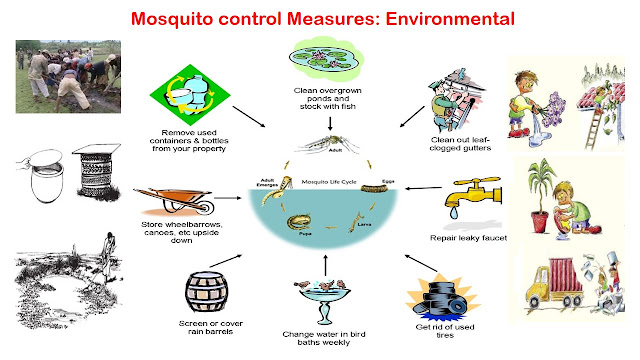Diabetes : A healthy diet is must
What is the need?
As we all know diet is important to control both type 1 and type 2 diabetes mellitus. For diabetics a proper diet plan is based on a healthy eating plant/habit. We don't need to prepare separate or special foods for diabetic person. The only need is to reduce total energy from fat and sugar and take a high-fiber complex carbohydrate diet of foods like wholemeal bread, rolled oats, pasta, beans, lentils, apples and low-sugar breakfast cereals.Food should be taken at regular intervals and spread throughout the day. It is good if advise taken by a doctor or dietitian regarding foods to be taken in diabetes.
What should be included in healthy diet?
Simple healthy guidelines for diabetics are
- Limitation of sugar in the diet.
- Limitation of fat.
- Limitation of alcohol.
- Take plenty of water.
- Reduction of salt in cooking and in food.
- Take a variety of fruit, vegetables, cereals and bread.
- Eating fish regularly.
- Taking a high-fibre diet.
- Take high-fibre carbohydrate: wholemeal cereal and breads.
What are wrong beliefs regarding diabetic diet?
Diabetics cannot eat rice and they can eat only wheat, this is not true.
Both wheat and rice have almost same calories and same effect on blood sugar.
The only advantage with wheat/ roti is that it is convenient to count & to reduce the number of chapathis than to measure rice
Total Fasting is good for diabetic, No absolutely not; especially when on treatment as it may lead to drop in blood sugar and may lead to health problems.
What are objectives of diabetic diet?
- It is most important to achieve an ideal weight through diet and exercise
- There should be maintenance of a diet low in fat, sugar and high in fibre, complex carbohydrates.
- There should be aim to eat a complex carbohydrate at each meal.
- Fasting blood sugar should be kept below 6 mmol/L.
How to reduce fats in the diet?
People normally take too much fat in one or other form. It should be reduced by reducing high fat containing foods.
Common sources of fats and oils are:
- Dairy products with high fat
- High-fat meats
- Various fats added to cooking
- Snacks and takeaway foods
- Processed sausages and small goods.
- While buying fats & oils, choose mainly monounsaturated or polyunsaturated
What is the use of carbohydrates & glycaemic index (GI)?
Carbohydrates are good for people with diabetes as they provide essential glucose in the blood stream when needed. Different carbohydrates affect the blood glucose levels differently. It is best to prevent the blood glucose levels from swinging too high or too low.
- Those carbohydrates are of ‘best choice’ that cause the smallest rise in blood glucose levels because they are digested slowly and released slowly example complex carbohydrates which are rich in fibre.
- These carbohydrates are called low glycaemic index or low-GI foods (‘glycaemic’ is a term for blood glucose).
- The glycaemic index (GI) is related to a standard of 100 represented by taking 50 grams of glucose.
- GI has a scale of 1 to 100.
- High-GI foods are those above 70.
- Low-GI foods are those below 55.
- It is better to have at least one low-GI food at each meal.
What are examples of low-GI foods?
- Cereals: Porridge, oat bran, Special K, muesli, All-Bran.
- Breads: Wholegrain, fruit loaf, sourdough, raisin bread, pumpernickel.
- Fruit: All fresh fruit, especially apples, firm bananas, oranges, stone fruit, grapes; canned fruit in natural juice.
- Vegetables: All fresh, frozen and canned vegetables.
- Dairy: Milk (especially skim, low-fat), yoghurt, low-fat cheese (e.g. cottage).
- Starchy foods: Sweetcorn, lentils, pasta, noodles, basmati rice, brown rice, sweet potato, dried beans and baked beans.
- Snacks: Prunes, dried apricots, nuts, Vita-Weat biscuits, Snack Right biscuits, peanuts, dark chocolates.
What are examples of high-GI foods?
- Cereals: Cornflakes, Rice Bubbles, Coco Pops, Nutrigrain.
- Breads: White, wholemeal, crumpets, scones, bagels, French bread.
- Fruits: Watermelon, dates, ripe bananas.
- Dairy: Cream, butter, ice-cream, cheese.
- Starchy foods: Potato (including baked, mashed, boiled and chips), regular rice, Calrose and jasmine rice.
- Snacks: Pretzels, Twisties, glucose lollies, most biscuits, water crackers, rice cakes, raisins, corn chips, cordials.
What are general advice for diabetics?
- Low-fat spreads should be used (e.g. light margarine, ricotta or cottage cheese).
- Moderate amounts of protein should be taken (e.g. lean meat, skinless poultry, seafood, eggs (not fried), legumes, unsalted nuts).
- Avoid foods that contain large amounts of added sugar, for example sweets, cakes, sweet biscuits, chocolates, soft drinks, jellies and desserts (can be eaten occasionally).
- Discuss a personalized meal plan with your dietitian or doctor.
- Usually no special diet required.
- It is not necessary to buy separate foods or prepare separate meals for diabetics.
- GI of common foods can be seen at the website www.glycemicindex.com.
References:
- John M. Murtaghs Patient Education. of 6th revised ed edition. North Ryde NSW: McGraw-Hill Australia. 2012
- https://www.niddk.nih.gov/
- https://www.cdc.gov/
- https://vikaspedia.in/health/diseases/diabetes/diet-and-diabetes
- https://www.shutterstock.com/search/sugar+bowl photo credit
- https://www.123rf.com/photo_87400383_butter-pieces-in-bowl-isolated-on-white-background-top-view.html photo credit
- https://www.sks-bottle.com/-p3-LiquorBottle.html photo credit
- https://www.musely.com/tips/Drink-a-glass-of-water-before-every-meal-This-should-make-you-fullcausing-you-to-eat-less/28326620 photo credit
- https://www.123rf.com/photo_89180403_stock-vector-a-spoon-of-salt-realistic-3d-style-isolated-on-white-background-vector-illustration.html photo credit
- https://www.health.harvard.edu/heart-health/high-fiber-diet-protects-against-cardiovascular-problems photo credit







Comments
Post a Comment